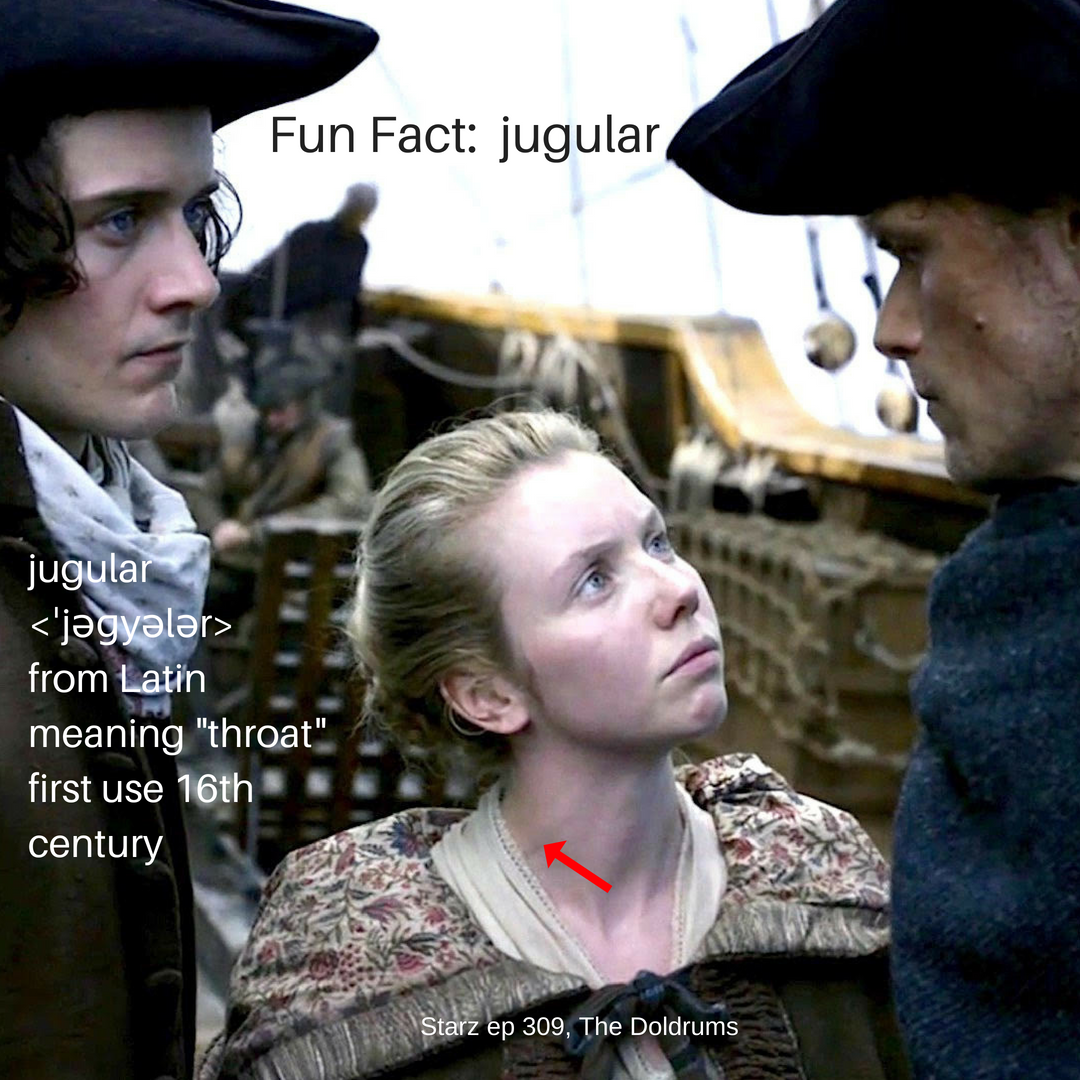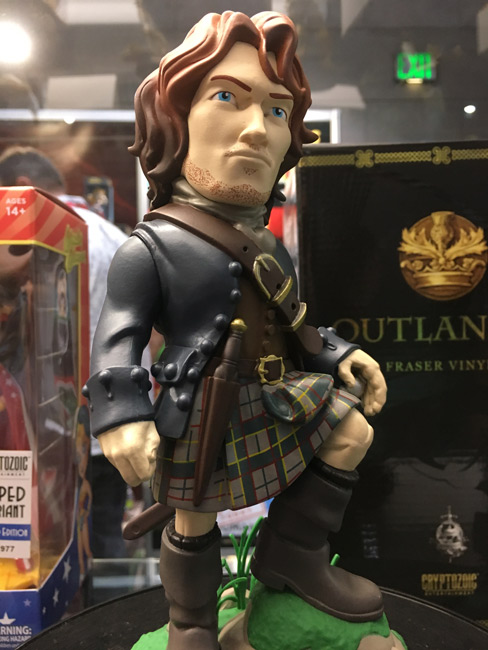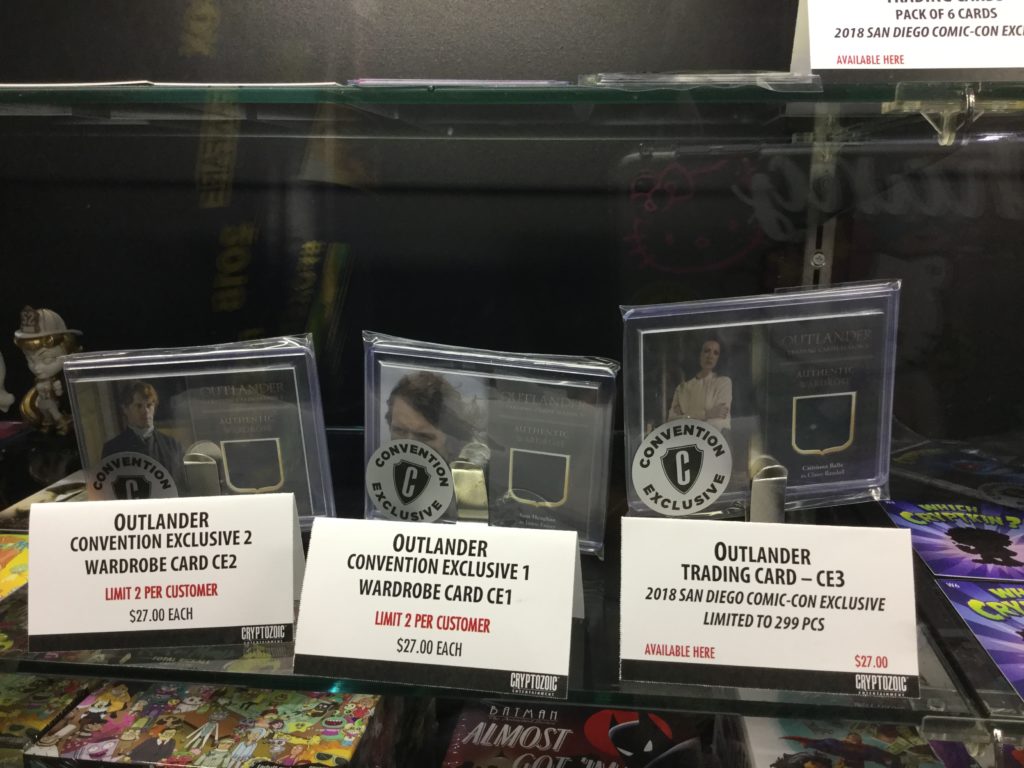
Anatomy def: The paired external jugular veins are superficial vessels draining blood from the exterior cranium (Anatomy Lesson #60 Let’s Mull the Skull!) and deep facial structures toward the heart.
Outlander def: Large neck veins often increasing in diameter as blood pressure rises – think of a hotly contested stramash, such as “I will marry him” vs. “no, ye will not!!!” The neck veins tend to stand out. <G>
Learn about the external jugular vein (EJV) in Anatomy Lesson #12, Claire’s Neck or The Ivory Tower.
Each EJV descends through the neck from the angle of mandible (lower jaw) to middle of the clavicle (collar bone), collecting blood from the outer skull and deep face.
Try this: Turn your neck to one side and look in a mirror. Can you see a blue line stretching from the angle of your jaw to your clavicle? This is the EJV. If you have no luck, try looking at a friend or family member. These veins are not always visible so don’t despair if you canna located them.
BTW, although veins appear blue or green under the skin, they are neither color. Various factors including light absorption, light scattering and reflection, less oxygen in venous blood and veins being closer to the surface all help account for this odd color change, an phenom known as the Tyndall effect.
Read about the EJV in Drums of Autumn book. Here the character’s name is not disclosed as the TV show has yet to catch up with the book (hurry, S4!). But, book readers will ken who Claire is doctoring. The pulsing vein Diana describes, is, indeed, the EJV!
I didn’t need to check his heart; his head was turned, and I could see the huge vein that ran down the side of his neck, throbbing with a pulse slow and heavy as a hammer blow. I touched him, feeling his skin cool and damp. No fever, no signs of shock. The whole of his enormous person radiated peace and well-being.
Now, wait a sec!!! Arteries pulse, but do veins pulse like arteries? Generally speaking, not that we can see. However, the right EJV may show a pulse because it lies very close to the right atrium of the heart. Put simply, as the right atrium contracts, blood pressure in the EJV may be seen as a pulse. Hence, Diana’s description is accurate. Score!
See Marsali’s external jugular vein in Starz ep 309, The Doldrums. Pugnacious lass that she is, she casts her stepdad a defiant look. She will have Fergus no matter what da says!
The deeply grateful,
Outlander Anatomist
Follow me on:
Photo Credit: Sony/Starz





